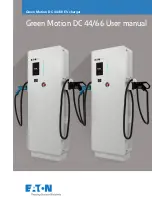
4-311
CONTROLS AND INSTRUMENTS
Emergency Lane Keeping (ELK)
The emergency lane keeping (ELK) is a system that supports the prevention of
collisions by assisting steering operations when the system determines there is a
possibility of colliding with a vehicle following on the left or right as you are changing
lanes.
Regardless of whether the driver operates the turn signal, when the vehicle starts to
change lanes while the radar sensors detect another vehicle, and when the system
determines that your vehicle may depart from its lane, the system assists the driver's
steering wheel operation to return the vehicle to its lane. The system detects lanes with
the stereo camera and determines that your vehicle may depart from its lane. At the
same time, it notifies the driver of the danger by the MID display, buzzer, and steering
wheel vibration. The same radar sensors as the blind spot monitor (BSM) are used (The
operating range of the ELK is the same as the BSM).
WARNING
• The driver is responsible for safe driving. Always check the surrounding area
yourself to be safe when driving the vehicle.
• Do not rely entirely on the ELK. The ELK is not an autonomous driving system.
The system does not operate in all situations. Relying only on the system to
keep the vehicle in the lane may lead to an accident, such as a collision with
an obstacle on the side of the lane or a vehicle driving in the adjacent lane. The
system does not allow you to drive while looking aside or to drive without your
hands on the steering wheel, etc. Be sure to grip the steering wheel while driving
the vehicle.
• If the amount and timing of the system's controls differ from your feeling of
driving operations, do not use the system because it cannot support driving
safely.
• Do not perform the operation test of the system by yourself.
• If the stereo camera cannot detect an object (lanes) or if the stereo camera
temporarily stops or malfunctions, the ELK does not operate.
• Do not use the system in the following situations.
- When emergency repairs using a puncture repair kit have been done
- When tire chains are installed
- When the vehicle drives unstably due to a traffic accident or malfunction
- When the brake system warning light is on
- When towing a vehicle, etc.
WARNING (Continued)
Blind Spot Monitor (BSM)
→ Refer to page 4-190
5108428_sec04_CONTROLS AND INSTRUMENTS_P143-end.indd 311
2020/11/12 15:29:12
Summary of Contents for D-MAX 2020
Page 6: ...5108428_sec00_PICTORIAL INDEX indd 4 2020 11 05 10 58 00...
Page 10: ...0 4 5108428_sec00_PICTORIAL INDEX indd 4 2020 11 05 10 58 01...
Page 278: ...5108428_sec04_CONTROLS AND INSTRUMENTS_P001 142 indd 2 2020 11 09 14 06 47...
Page 676: ...5 50 COMFORT AND CONVENIENCE 5108428_sec05_COMFORT AND CONVENIENCE indd 50 2020 11 05 11 53 36...
Page 678: ...5108428_sec06_SERVICE AND MAINTENANCE_P001 140 indd 2 2020 11 05 11 54 07...
Page 876: ...7 46 IN CASE OF EMERGENCY 5108428_sec07_IN CASE OF EMERGENCY indd 46 2020 11 13 14 57 14...
Page 881: ...8 5 MAIN DATA 5108428_sec08_MAIN DATA indd 5 2020 11 20 15 36 34...
Page 921: ...MEMO 5108428_sec09_INDEX indd 5 2020 11 13 14 57 34...
Page 922: ...MEMO 5108428_sec09_INDEX indd 6 2020 11 13 14 57 34...
















































